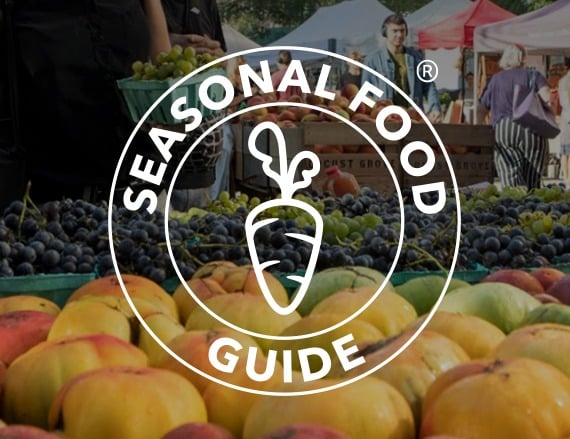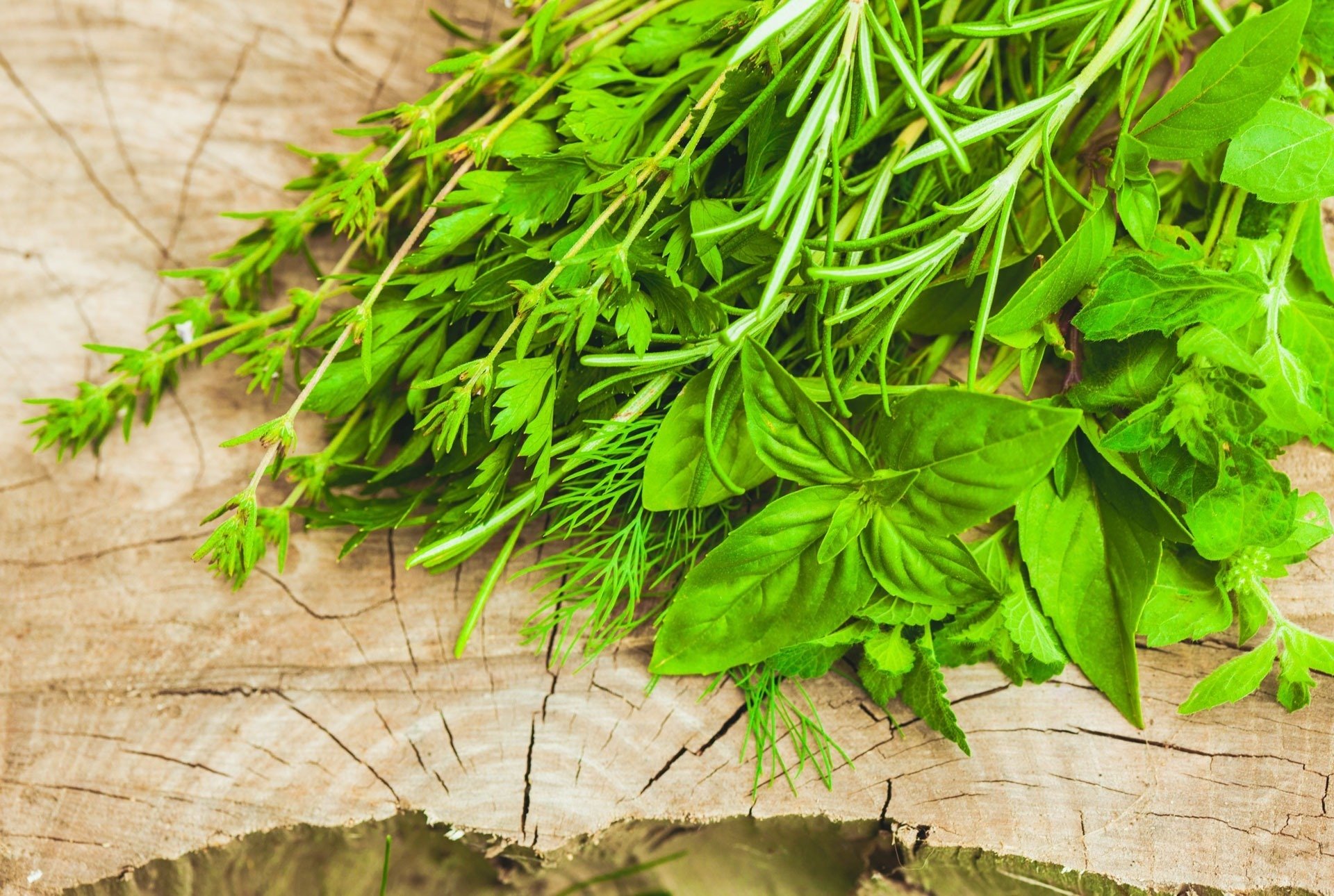Real Food Encyclopedia | Mint
Mint, grown around the world for its versatility in cooking, medicine and in cosmetics, is a sure sign of spring and summer. No matter the variety, diverse and delicious mint is notorious for spreading ruthlessly in gardens, and returning without much effort from the gardener or farmer, year after year.
The major mint varieties used in cooking and cosmetics are:
- Mentha arvenisis (Japanese mint, field mint, corn mint): thrives in tropical and Mediterranean climates, used fresh or grown for its essential oil.
- Mentha piperita: (peppermint): a hybrid of three other mint species, now grown extensively for its essential oil and for its use (fresh and dried) in cooking.
- Mentha spicata: (spearmint): a hybrid of two other mint species, grown also for its essential oil and its usefulness in cooking.
Fun Facts about Mint:
- Both fresh and dried mint featured prominently in recipes in Apicius, an ancient Roman cookbook. Our favorite is for boiled ostrich with mint, cumin, leeks, dates and honey.
- The Ancient Egyptian Ebers Papyrus, a medical text that dates from around 1550 BCE, mentions mint several times as a remedy for various ailments, including abdominal troubles.
- According to the Mint Industry Research Council, 45 percent of the peppermint and spearmint oil produced in the US is used for flavoring chewing gum.
What to Look for When Buying Mint
Most of the mint you will find in the market (for culinary use) is either peppermint or spearmint. Peppermint generally has purple-ish stems and pointed, dark green leaves. Spearmint usually has lighter green leaves, with toothed (spiky) edges and a more ruffled appearance. Fresh spearmint is used more frequently in cooking, because it does not contain menthol, the oil that produces that distinctive “cooling” sensation (peppermint contains menthol in abundance).
In general, look for fresh mint with perky leaves and stems, with no black or dried spots or wilted parts. Fresh mint should be very aromatic.
Sustainability of Mint
Mint oil, an ingredient in a so much candy, gum, and toiletries, is very greenhouse gas-intensive to produce, since the oil is extracted using steam, which, of course, must be heated.
In addition, the production of mint oil creates the need for heavy use of insecticides, herbicides and chemical fertilizer, because any variation in the growing mint plants and harvested mint (including adulteration with weeds) can affect the quality of the mint oil produced, which in turn affects the price of the oil for mint farmers. For use at home, it is easy to grow your own (pesticide-free) mint in pots, or check with your local herb farmer to find out about his or her mint-growing practices.
Mint Seasonality
Mint begins to appear in the late spring and early summer, and is available fresh through the early fall.
Eating Mint
Storing Fresh Mint
You can put a bunch of fresh mint in a jar full of water right on the countertop. Stored this way, mint will keep for a least a week (and may end up sprouting roots if you keep the water clean). You can also roll fresh mint bunches in a damp paper towel and stick them in a zip-top bag in your crisper drawer.
Cooking with Mint
Fresh mint is as diverse in the kitchen as any herb, especially if you stick to using spearmint (as opposed to peppermint) in your recipes. Dried mint is frequently used in Middle Eastern recipes to flavor vegetables and meats. Mint oil is used in lots and lots of yummy sweets, including peppermints and chocolates.
Fresh mint leaves are generally not cooked, but left raw in a dish to brighten up and enhance the flavors of fruits, vegetables, meats and grains. Fresh mint pairs amazingly well with the spring veggies and fruit that are just poised to hit the market, like peas, lettuce, strawberries, rhubarb, asparagus, favas and artichokes. It’s also delicious with summer produce. Try substituting mint for basil in your next Caprese salad, chop up fresh mint and toss in with grilled or sautéed green beans or make a raw zucchini or pattypan squash “carpaccio” topped with a chiffonade of mint leaves, a drizzle of good olive oil and some crunchy sea salt. You can also pop a bit of fresh mint tossed into cold grain salads like farro and quinoa. Fresh (or dried) mint makes an excellent addition to meatballs and lamb burgers, to add a bit of Middle Eastern flair (mint is used extensively in many Middle Eastern cuisines).
In desserts, fresh mint and mint oil (in candies like peppermints and chocolates) stars. You can make clothing designer Isaac Mizrahi’s fresh Mint Chocolate Chip Ice Cream or other classic mint-based deserts like grasshopper pie (made with crème de menthe — more on that below). And, of course, we can’t forget chewing gum — the food-like substance that accounts for most of the world’s production of mint (for its essential oils).
The herb is also incredibly delicious in cocktails and other beverages, like the mojito, made with rum, mint, lime and sugar (here’s a history of the beverage). There’s also the mint julep, traditionally served on Kentucky Derby Day, the first weekend in May. Here’s the history and a recipe for the drink. Crème de menthe, a mint-flavored liqueur, has, of late, been regulated to an ingredient in grasshopper pies and crème de menthe brownies, but was once much more popular, and is a main ingredient in cocktails like the grasshopper and the stinger. Here’s a recipe for DIY crème de menthe.
On the non-alcoholic tip, refreshing mint tea is a must in the summer — make it by steeping fresh or dried mint leaves in water and chilling over ice.
Preserving Mint
Mint dries beautifully. Hang bunches upside down in a cool, dry, place until the leaves are dry, then crumble and store in an airtight container. They will keep for at least a year (longer than that and the oils in the leaves start to fade). Use in soups, to flavor meatballs (especially lamb) and to make mint tea. You can also freeze mint: here’s a nice little tutorial.
Mint Nutrition
A couple of tablespoons of fresh mint won’t give you a whole lot of nutritional benefit, but it is fairly high in Vitamin A, Vitamin C, iron, manganese, folate and even calcium. Medicinally, mint has been used for millennia for various ailments, including stomachaches and respiratory issues. Modern medicine is beginning to catch up with ancient mint-y remedies for ailments like irritable bowel syndrome, skin irritation, headaches, and colds and flu.


